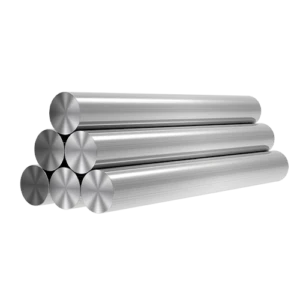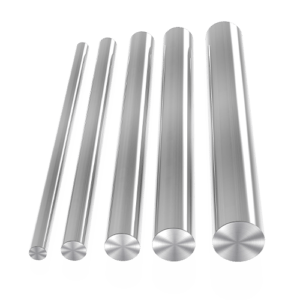Welcome to My Blog!
Before we dive into the content, I’d love for you to join me on my social media platforms where I share more insights, engage with the community, and post updates. Here’s how you can connect with me:
Facebook:https://www.facebook.com/profile.php?id=100090063158454
Now, let’s get started on our journey together. I hope you find the content here insightful, engaging, and valuable.
Introduction

440 Stainless Steel is a high-carbon stainless steel renowned for its excellent hardness and corrosion resistance. It is often chosen for applications requiring a combination of high strength and good corrosion resistance. This blog delves into the properties and uses of 440 Stainless Steel, providing a comprehensive overview to help you understand its suitability for various applications.
Properties of 440 Stainless Steel
1. Chemical Composition
Breakdown of Chemical Elements
440 Stainless Steel is a martensitic stainless steel with a unique chemical composition that imparts its distinctive properties. The primary elements in 440 Stainless Steel include:
- Chromium (16-18%): Enhances corrosion resistance and hardness.
- Carbon (0.60-0.75%): Increases hardness and strength.
- Manganese (1.00% max): Improves toughness and wear resistance.
- Silicon (1.00% max): Contributes to strength and oxidation resistance.
Properties Derived from Chemical Composition:
- High Hardness: Due to high carbon content.
- Excellent Corrosion Resistance: From chromium content.
2. Mechanical Properties
Key Mechanical Characteristics
The mechanical properties of 440 Stainless Steel make it suitable for demanding applications. Key properties include:
- Hardness: 440 Stainless Steel can achieve high hardness levels (up to Rockwell hardness 58 HRC) after heat treatment.
- Tensile Strength: Typically ranges from 500 to 700 MPa, providing strong resistance to deformation.
- Yield Strength: Around 400 MPa, making it strong and durable.
Importance of Mechanical Properties:
- Wear Resistance: High hardness and strength improve wear resistance.
- Durability: Ensures long-lasting performance in harsh conditions.
3. Corrosion Resistance
Performance in Various Environments
440 Stainless Steel offers good corrosion resistance, particularly in environments that are not extremely aggressive. Its corrosion resistance is due to its high chromium content.
Corrosion Resistance Features:
- Resistant to Oxidation: Suitable for applications exposed to air and moisture.
- Limited Resistance to Chlorides: Not ideal for marine or highly saline environments.
Applications Benefiting from Corrosion Resistance:
- Cutlery and Kitchen Utensils: Often used in knives and other utensils.
- Mechanical Components: Used in components exposed to moderate corrosion.
4. Heat Treatment and Hardness
Heat Treatment Processes
440 Stainless Steel can be heat-treated to enhance its mechanical properties. The typical heat treatment process includes:
- Annealing: Performed at temperatures of 800-850°C to relieve internal stresses and improve machinability.
- Quenching: Rapidly cooling the steel from high temperatures to achieve high hardness.
- Tempering: Heating to a lower temperature (150-200°C) to reduce brittleness and increase toughness.
Effect of Heat Treatment:
- Increased Hardness: Achieved through quenching.
- Improved Toughness: Enhanced by tempering.
5. Applications of 440 Stainless Steel

Common Uses and Industries
440 Stainless Steel is versatile and used in various applications due to its properties. Some common uses include:
- Cutlery: High-quality knives and blades.
- Automotive Parts: Components requiring high strength and wear resistance.
- Medical Instruments: Surgical tools and equipment due to its hardness and corrosion resistance.
Industries Utilizing 440 Stainless Steel:
- Manufacturing: For durable components and tools.
- Healthcare: For precision instruments and tools.
Table: Comparison of 440 Stainless Steel with Other Stainless Steels
| Property | 440 Stainless Steel | 304 Stainless Steel | 316 Stainless Steel | Description |
|---|---|---|---|---|
| Chromium Content | 16-18% | 18-20% | 16-18% | Corrosion resistance enhancement. |
| Carbon Content | 0.60-0.75% | 0.08% max | 0.08% max | Affects hardness and strength. |
| Hardness (Rockwell HRC) | Up to 58 HRC | 30-35 HRC | 30-35 HRC | Hardness level comparison. |
| Tensile Strength (MPa) | 500-700 MPa | 520-720 MPa | 500-700 MPa | Strength comparison. |
| Corrosion Resistance | Moderate | Excellent | Superior | Suitability in various environments. |
| Heat Treatment | Annealing, Quenching, Tempering | Not typically heat-treated | Not typically heat-treated | Typical heat treatment processes. |
Conclusion
440 Stainless Steel is a versatile material with exceptional hardness and corrosion resistance, making it suitable for various demanding applications. Its properties, such as high carbon content and good mechanical strength, make it a popular choice for cutlery, automotive parts, and medical instruments. Understanding these characteristics can help you select the right material for your specific needs and ensure optimal performance.
FAQs
1. What are the main advantages of 440 Stainless Steel?
440 Stainless Steel offers several advantages, including high hardness, good wear resistance, and decent corrosion resistance. These properties make it ideal for applications that require strength and durability, such as knives and automotive parts.
2. How does 440 Stainless Steel compare to 304 and 316 Stainless Steels?
440 Stainless Steel is known for its higher hardness and strength compared to 304 and 316 Stainless Steels, which offer better corrosion resistance. While 440 Stainless Steel is suitable for applications requiring high strength, 304 and 316 are better suited for environments with higher corrosion risks.
3. Can 440 Stainless Steel be heat-treated?
Yes, 440 Stainless Steel can be heat-treated to enhance its hardness and toughness. Common heat treatment processes include annealing, quenching, and tempering, which help achieve the desired mechanical properties.
4. What are the typical applications of 440 Stainless Steel?
440 Stainless Steel is commonly used in cutlery, automotive parts, and medical instruments. Its hardness and corrosion resistance make it suitable for applications requiring high strength and durability.
5. Is 440 Stainless Steel suitable for marine environments?
440 Stainless Steel has limited resistance to chlorides and may not be ideal for marine environments. For applications in highly saline conditions, 316 Stainless Steel, which offers superior corrosion resistance, would be a better choice.
